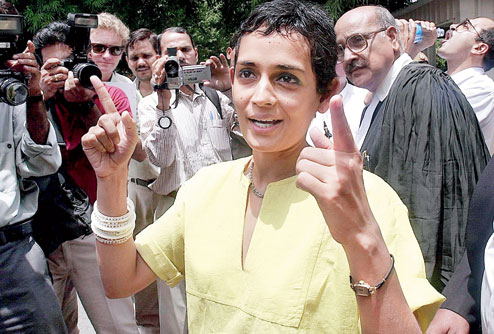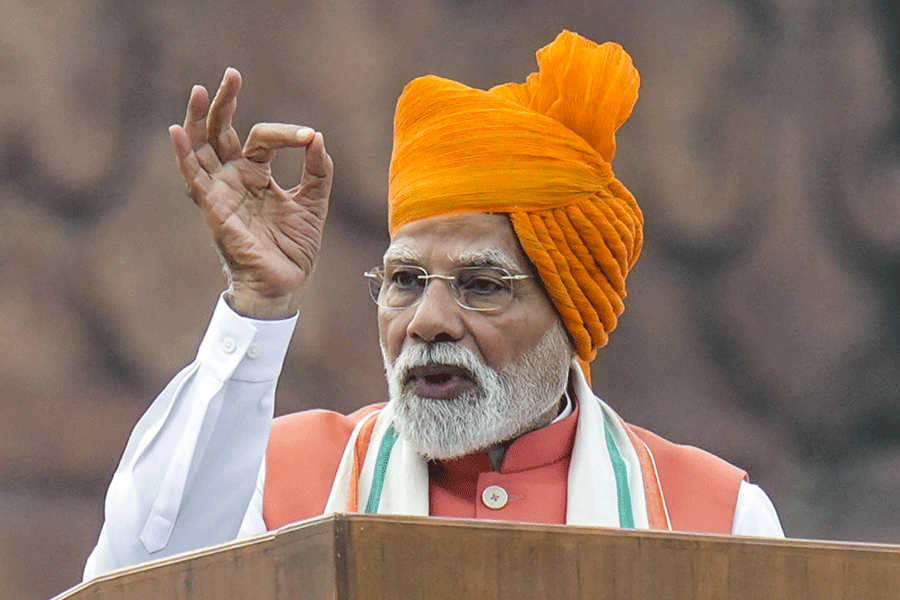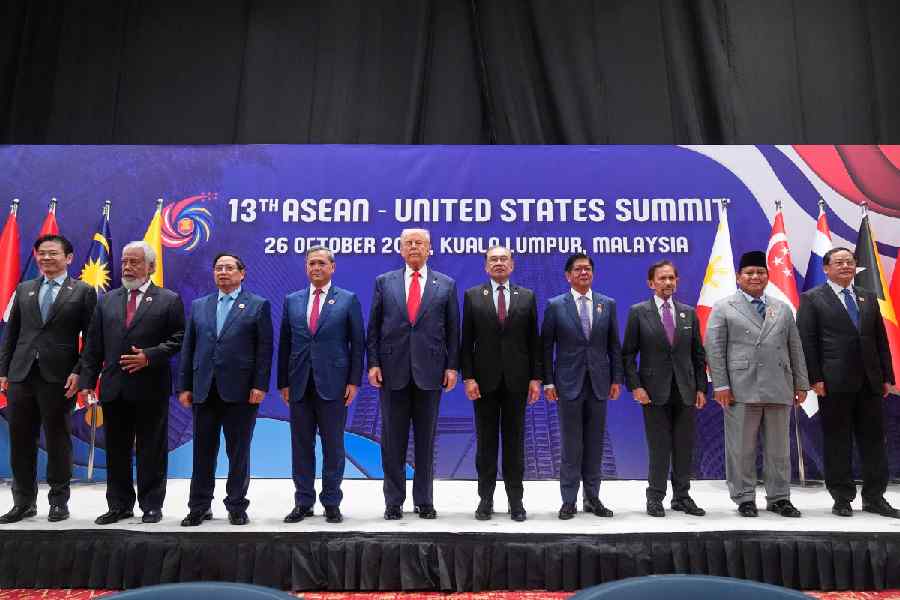 |
| bloodied but unbowed: Arundhati Roy outside the Supreme Court in 2001 |
At an international law conference that I had attended in the garden city of Bangalore many years ago, a prominent American journalist told me how he had been “cited” by a US court for reporting a pending case in colours too fanciful for the presiding judge. The American journalist (backed by the proprietor of his newspaper) told the federal judge: “We want no accommodation from you. The First Amendment 11 is on our side. We will fight it out.” The judge quietly responded: “Have it your way. But don’t forget, who the umpire is in this battleground!”
With a few exceptions, the “umpire” in India continues to exhibit a dark and forbidding countenance. A case in point is that of author and activist Arundhati Roy. Some years ago, she had commented on a court order in language too brash for the then Chief Justice of India, Adarsh Sein Anand, and for Justice B.N. Kirpal. This occurred when the majority in a bench of three judges passed an order (2:1, with Justice S.P. Bharucha dissenting) permitting the raising of the height of the dam across the Narmada river in Gujarat, the necessary consequence of which was the flooding of the homes of tribals who had traditionally lived for centuries on its high banks. According to the dissenting judge, rehabilitation efforts had not kept pace with the height of the dam.
Arundhati Roy (not a party to the proceedings in court) used some vituperative epithets about this order. Ultimately (and commendably) all three judges simply ignored Arundhati Roy’s remarks, saying “the Court’s shoulders are broad enough to shrug them off”.
But soon after, the same lady was involved in a dharna outside the Supreme Court, participating in the shouting of slogans and name-calling. It was felt that this simply could not be ignored! On a contempt notice being issued, she responded by filing what the court characterised as a “contemptuous affidavit”, for which she was asked to show cause why she should not be committed for contempt.
In her affidavit to show cause, she repeated what she had said earlier; on this occasion, the court (a bench of two justices) held that she was guilty of “scandalising the court” and sentenced her to simple imprisonment for one day and ordered her to pay a fine of Rs 2,000.
Unchastened, the indefatigable Arundhati Roy stuck out her chin with an almost defiant: “My head is bloody but unbowed!”
The sentence imposed on her was neither harsh nor improper (given the circumstances and the state of the law) but the very initiation of contempt proceedings against her had sent shivers down the spine of all and sundry (especially members of the media).
The very initiation of proceedings for contempt of court was sufficient to convey the message: “Don’t trifle with us — you will never succeed.”
“Scandalising the court” is an aspect of “criminal contempt” (where the accuser is also the judge); it has long since fallen into disuse in most of the civilised countries around the world, but not in India!
The origin of this branch of contempt law known as “scandalising the court” is shrouded in antiquity. In textbooks it has been described as “both dubious and controversial”: dubious, since it originates from a dictum of one judge, Justice J.E. Wilmot, in the John Wilkes case way back in 1765 and controversial since the dictum was recorded in a judgment that was never delivered.
It was published by Justice Wilmot’s son after his father died: the judgment had been reserved after argument, and when it was ready to be delivered, it was found that the writ (case) against Wilkes was incorrectly titled; since the procedural law of the time did not permit an amendment to the writ unless consented to by both parties, the entire case had to be abandoned! This then is the ancestry of that part of the law of contempt that goes by the name “scandalising the court”; it is based on a judgment never delivered in court in a case that had already abated!
Strange are the ways of providence; sometimes, stranger are the ways of courts! There are no rules and no precise circumstances as to when it can be said that the administration of justice is brought into “contempt”. Judgments of courts are strewn with pious platitudes that give little guidance to newsmen (and newswomen), editors or commentators. This part of the law of contempt — although necessary in extreme cases — constitutes a standing threat to a cherished Fundamental Right: the freedom of expression. It leaves too much to the predilections of the individual judge (or judges). Even the decisions rendered in contempt cases sometimes give the uncanny feeling that the status of the person who “scandalises” the court may well have influenced the ultimate result.
In P.N. Duda vs P. Shiv Shankar (AIR 1988, SC 1208 at 1213), a Cabinet minister of the Government of India was exonerated though he had compared the judges of the Supreme Court to “anti-social elements, foreign exchange violators, bride burners and a whole horde of reactionaries who have found their haven in the Supreme Court”. The court said that the speech of the minister had to be read “in its proper perspective” and, when so read, it did not bring the administration of justice into disrepute! But in a later case (also reported) — Mohd. Zahir Khan vs Vijai Singh and Others (AIR 1992, SC 642) — an impetuous (but insignificant) litigant, merely said in a loud voice in court: “Either I am anti-national or the judges are anti-national.” He was immediately cited for contempt, pronounced guilty and sentenced to undergo simple imprisonment for one month!
* * *
In India the higher judiciary has inherent (and almost unbridled) powers of contempt — even beyond laws enacted by Parliament. And for that reason, the media and the whole lot of information-seeking agencies — not sure of how the contempt law will be interpreted — are tight-lipped. No one dares come out with what they believe to be the FACTS (in any matter pertaining to judges or the administration of justice) even though the law (amending the Contempt of Courts Act, 1971) now permits “justification by truth” as a valid defence.
But let a complaint be made even by a responsible individual against a reputedly corrupt judge in the higher judiciary, and no newspaper will publish it!










